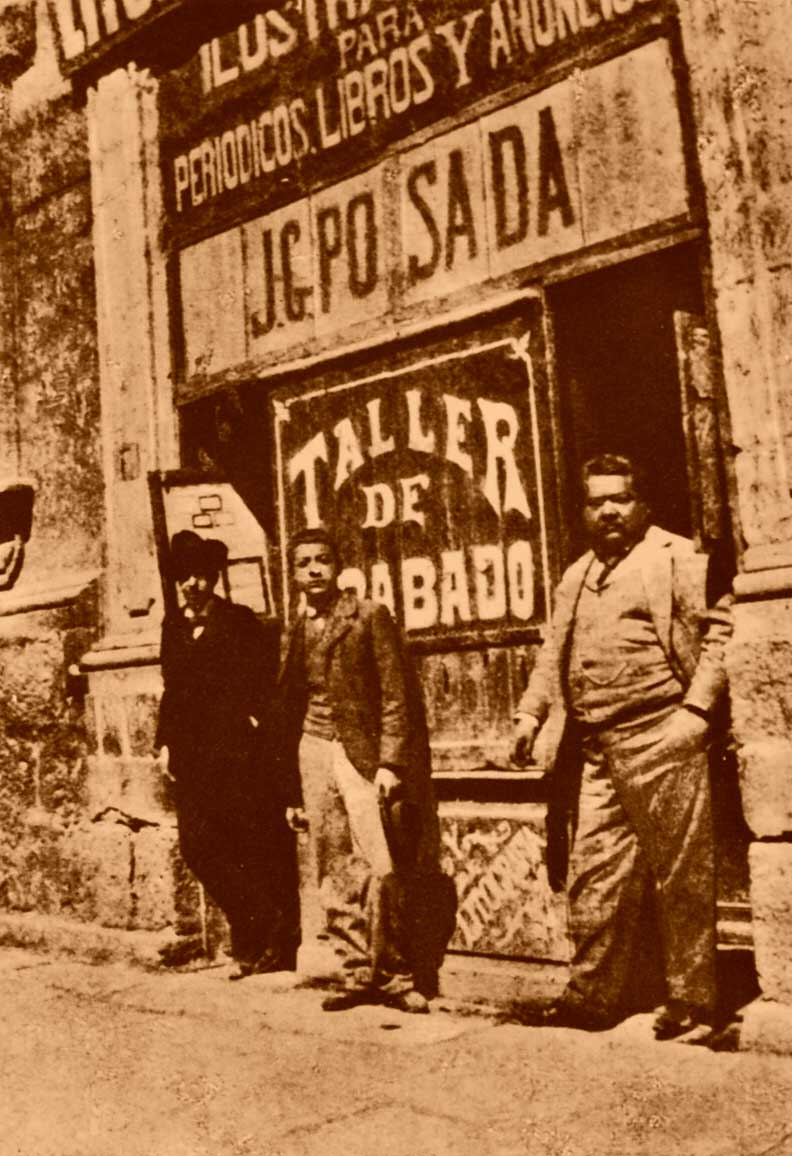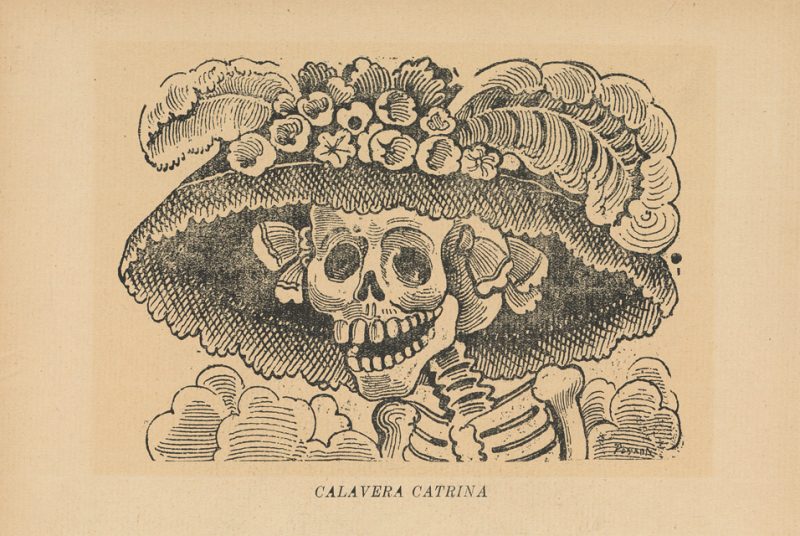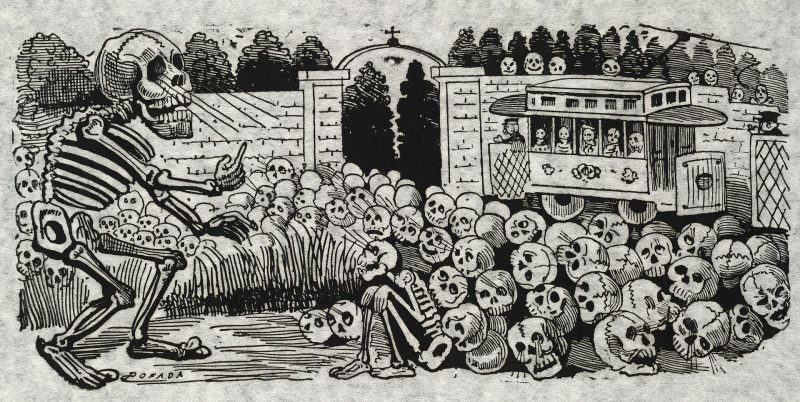Deriving from the Spanish word for ‘skulls’, these calaveras were illustrations featuring skeletons which would, after Posada’s death, become closely associated with the Mexican holiday Día de Los Muertos, the Day of the Dead.
José Guadalupe Posada (1851–1913) was a Mexican illustrator known for his satirical and politically acute Calaveras whose work has influenced many Latin American artists and cartoonists because of its satirical acuteness and social engagement. He used skulls, calaveras, and skeletons to make political and cultural critiques.

In 1871, before he was out of his teens, his career began with a job as the political cartoonist for a local newspaper in Aguascalientes, El Jicote (“The Bumblebee”). The newspaper closed after 11 issues, reputedly because one of Posada’s cartoons had offended a powerful local politician. He then moved to the nearby city of León, Guanajuato.

There Posada was married to Maria de Jesús Vela on September 20, 1875. In Leon, a former associate of his from Aguascalientes assisted him in starting a printing and commercial illustration shop. They focused on commercial and advertising work, book illustrations, and the printing of posters and other representations of historical and religious figures. Included among these figures were the Virgin of Guadalupe, the Virgin, the Holy Child of Atocha and Saint Sebastian.

In 1883, following his success, he was hired as a teacher of lithography at the local Preparatory School. The shop flourished until 1888, when a disastrous flood hit the city. He subsequently moved to Mexico City. His first regular employment in the capital was with La Patria Ilustrada, whose editor was Ireneo Paz, the grandfather of the famed writer Octavio Paz.

He later joined the staff of a publishing firm owned by Antonio Vanegas Arroyo and while at this firm he created a prolific number of book covers and illustrations. Much of his work was also published in sensationalist broadsides depicting various current events.

Posada’s best known works are his calaveras, which often are in various costumes, such as the Calavera de la Catrina, the “Skull of the Female Dandy”, which was meant to satirize the life of the upper classes during the reign of President Porfirio Díaz. Most of his imagery was meant to make a religious or satirical point.

On January 20th 1913, 3 years after the start of the Mexican Revolution, José Guadalupe Posada died at his home in obscurity. He was penniless and buried in an unmarked grave.
Largely forgotten by the end of his life, Posada’s engravings were brought to a wider audience in the 1920s by the French artist Jean Charlot, who encountered them while visiting Diego Rivera. While Posada died in poverty, his images are well known today as examples of folk art.
Jean Charlot described Posada as “Printmaker to the Mexican people”.






Today, Posada’s work is housed in various collections throughout the world. A museum dedicated to the artist is located in Posada’s hometown of Aguascalientes, Mexico. The Museo Jose Guadalupe Posada features prints along with the original metal plates that were used to create them.
All photos: Library of Congress